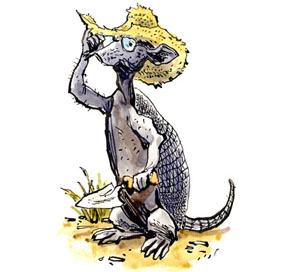Credits and Behind the Scenes

Death on Board La Belle: Finding Clues from the Bones was created by the TBH team of Editor Susan Dial, Web Developer Heather Smith, and Education Advisors Laine Leibick and Carol Schlenk. Data was drawn from several sources including an unpublished report on the Belle skeleton, "Human Skeletal Analysis," by D. Gentry Steele and Michelle Raisor of Texas A&M University. Images used in this exhibit were contributed primarily by the Texas A&M Conservation Research Laboratory and the Texas Historical Commission. The anatomy chart used in the laboratory analysis activity is from Wikipedia. A number of the images were altered to include Dr. Dirt, the Armadillo Archeologist.
Below, we meet the actual scientists (Ph.D. doctors) who performed the many different types of analyses on the Belle skeleton. This team gave meaning to the 300-year-old bones, helping us understand what life must have been like for this young Frenchman traveling to the New World.
Sources to Learn More about the Belle Skeleton and Shipwreck
- La Belle Shipwreck A multi-section virtual exhibit on Texas Beyond History, including a correlated lesson for teachers.
- Texas A&M Conservation Research Laboratory: Conserving the Human Skeleton Found on the Belle The conservation of the human skeleton is presented in this report.
- 2005 From a Watery Grave: The Discovery and Excavation of La Salle's Shipwreck, La Belle. Texas A&M University Press.
- 1998 The La Salle Expedition to Texas: The Journal of Henri Joutel, 1684-1687. Texas State Historical Association.
- 2002 Raising La Belle Eakin Press.
